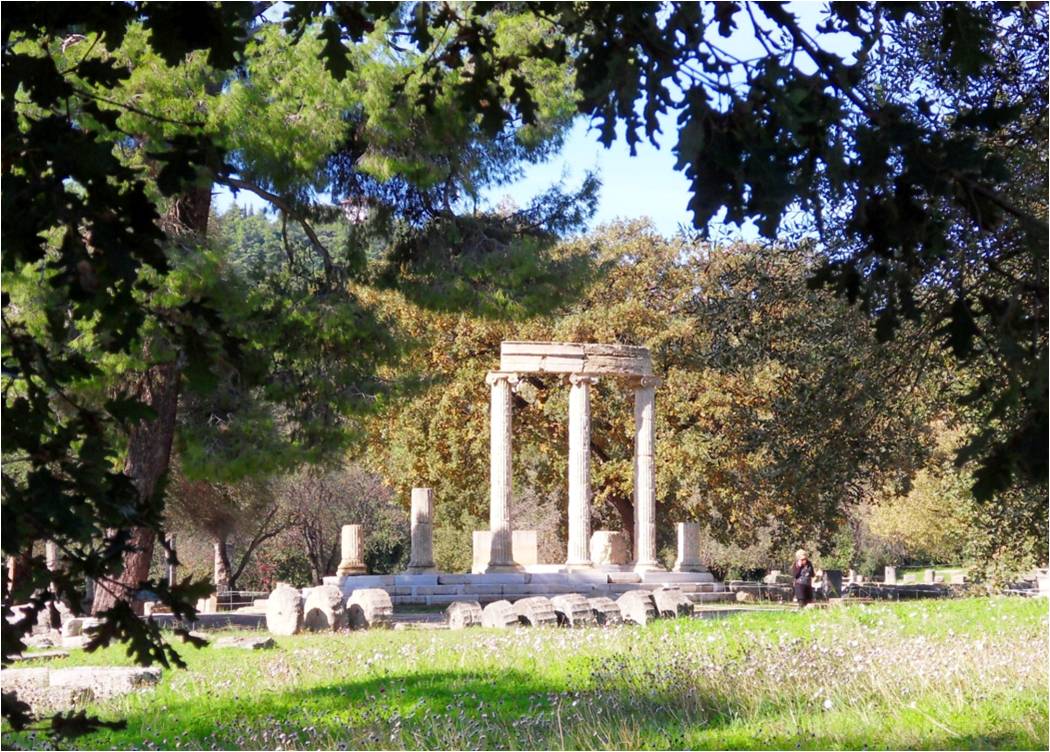Olympia

Olympia was one of the most important sanctuaries of ancient Greece although we know it as the birthplace of the Olympic Games. There are a number of different versions as to how the Olympic Games began. One puts it down as the place where Zeus overcame his father Cronus and seized the throne. It thus became a sacred place to Zeus and he created the games to celebrate his victory. The first recorded Olympic Games took place in 776 BC although they may have started earlier. At that time there was just one event, a foot race over a stade, a distance of 180 metres.
From 472 BC the games were held over five days instead of the original one as new events such as boxing, pentathlon (long jump, discus, sprint, javelin, and wrestling), horse and chariot racing and the Pancrateon (a free style fighting) as well as additional track events had been introduced. During the time of the games all hostilities would cease and great honour was attached to winning. The games were ended in 394 AD by the Roman Emperor Theodosius as they were seen as being Pagan. They were reinstated in 1896 in Athens with the Olympic flame being lit at the temple of Hera, the oldest structure in Olympia, and carried to the site of the games, something which still happens today.
Only ruins now remain but it is still possible to see the main buildings: The temple of Zeus, begun in 470 BC and placed on a platform in order to raise it above the over buildings. At the centre of the temple stood a twelve-meter high gold and ivory statue of Zeus, which was one of the 12 wonders of the ancient world. Today we can see the south colonnade with the fallen columns toppled by an earthquake. The circular Tholos called Philippeion, begun in 338 BC by Philip II. He died in 336 BC before it was finished so it was completed by his son, Alexander the Great. The Stadium with the vaulted entrance known as the Krypte due to it being covered over can also be seen as can the remains of many other sports structures erected for the games. The site also has a museum containing many statues and artefacts found at the site, which became a UNESCO World Heritage site in 1989.
To see more photographs and take a virtual tour of the site click on the photoshow below.
